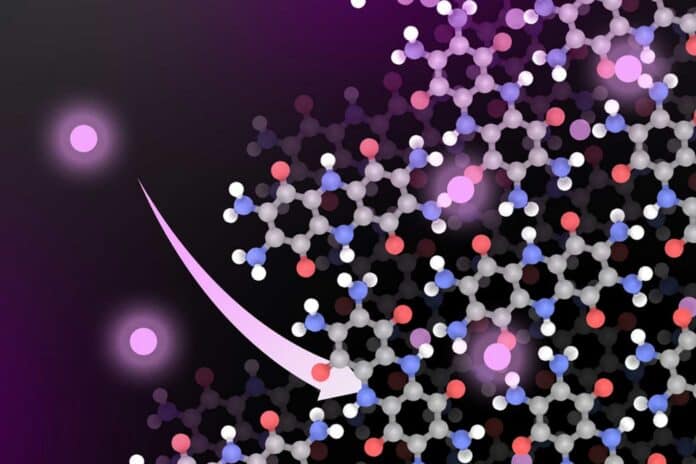Stopping using important metals in cathode materials can make rechargeable lithium-ion batteries more popular worldwide. Organic cathode materials, created from common elements on Earth, are good alternatives. However, they have yet to be able to compete with inorganic cathodes because they often have issues like not conducting electricity well, having low storage capacity in real-life situations, or not lasting for many charging cycles.
MIT researchers have created a new battery material for electric cars that could be more environmentally friendly. This lithium-ion battery uses an organic material for the cathode instead of cobalt or nickel, commonly found in lithium-ion batteries.
The researchers found that this new material can conduct electricity at rates similar to cobalt batteries, has similar storage capacity, and can be charged faster. Additionally, it could be produced at a much lower cost than batteries containing cobalt.
Electric cars mostly use lithium-ion batteries, which recharge as lithium ions move from a positively charged cathode to a negatively charged anode. The cathode in many lithium-ion batteries contains cobalt, a metal known for its stability and energy density. However, cobalt has drawbacks, being a scarce metal with fluctuating prices.
Moreover, cobalt extraction poses environmental and ethical issues, often involving hazardous conditions, toxic waste, and reliance on deposits in politically unstable regions.
Mircea Dincă, the W.M. Keck Professor of Energy at MIT, said, “Cobalt batteries can store a lot of energy, and they have all of the features that people care about in terms of performance, but they have the issue of not being widely available, and the cost fluctuates broadly with commodity prices. And, as you transition to a much higher proportion of electrified vehicles in the consumer market, it will certainly get more expensive.”
Around six years ago, a project funded by Lamborghini led Dincă’s lab to work on developing an organic battery for electric cars. While experimenting with porous materials that were a mix of organic and inorganic components, the researchers stumbled upon a fully organic material that showed promise as a strong conductor.
This material comprises multiple layers of TAQ (bis-tetraaminobenzoquinone), an organic molecule with three fused hexagonal rings. The layers form a structure similar to graphite, and within the molecules are quinones and amines, making the material stable and insoluble.
The insolubility is crucial for preventing the material from dissolving into the battery electrolyte, thus extending its lifespan.
Dincă says, “One of the main methods of degradation for organic materials is that they simply dissolve into the battery electrolyte and cross over to the other side of the battery, essentially creating a short circuit. If you make the material insoluble, that process doesn’t happen, so we can go to over 2,000 charge cycles with minimal degradation.”
Tests on the organic material revealed that its conductivity and storage capacity were comparable to traditional cobalt-containing batteries. Batteries with a TAQ cathode demonstrated faster charging and discharging rates, potentially accelerating the charging speed for electric vehicles.
To enhance the stability of the organic material and its adhesion to the battery’s current collector (typically made of copper or aluminum), the researchers incorporated filler materials like cellulose and rubber. These fillers, constituting less than one-tenth of the overall cathode composite, have negligible effects on the battery’s storage capacity.
Moreover, they contribute to extending the battery cathode’s lifespan by preventing cracking during the flow of lithium ions. The primary materials for this cathode—quinone precursor and amine precursor—are already commercially available, and the researchers estimate that the material cost for assembling these organic batteries could be one-third to one-half that of cobalt batteries.
Journal Reference:
- Tianyang Chen, Harish Banda, Jiande Wang, et al. A Layered Organic Cathode for High-Energy, Fast-Charging, and Long-Lasting Li-Ion Batteries. ACS Central Science. DOI: 10.1021/acscentsci.3c01478
